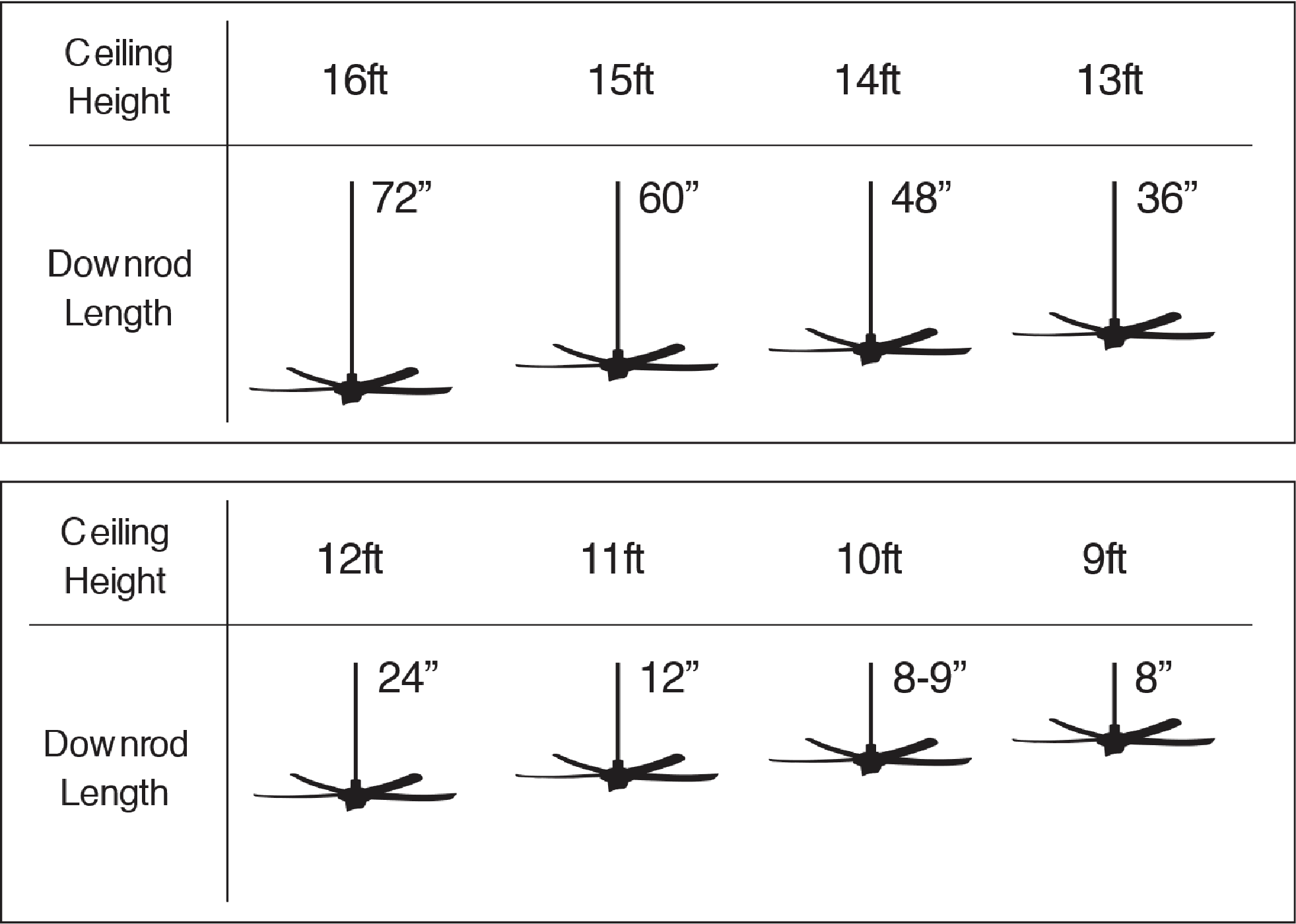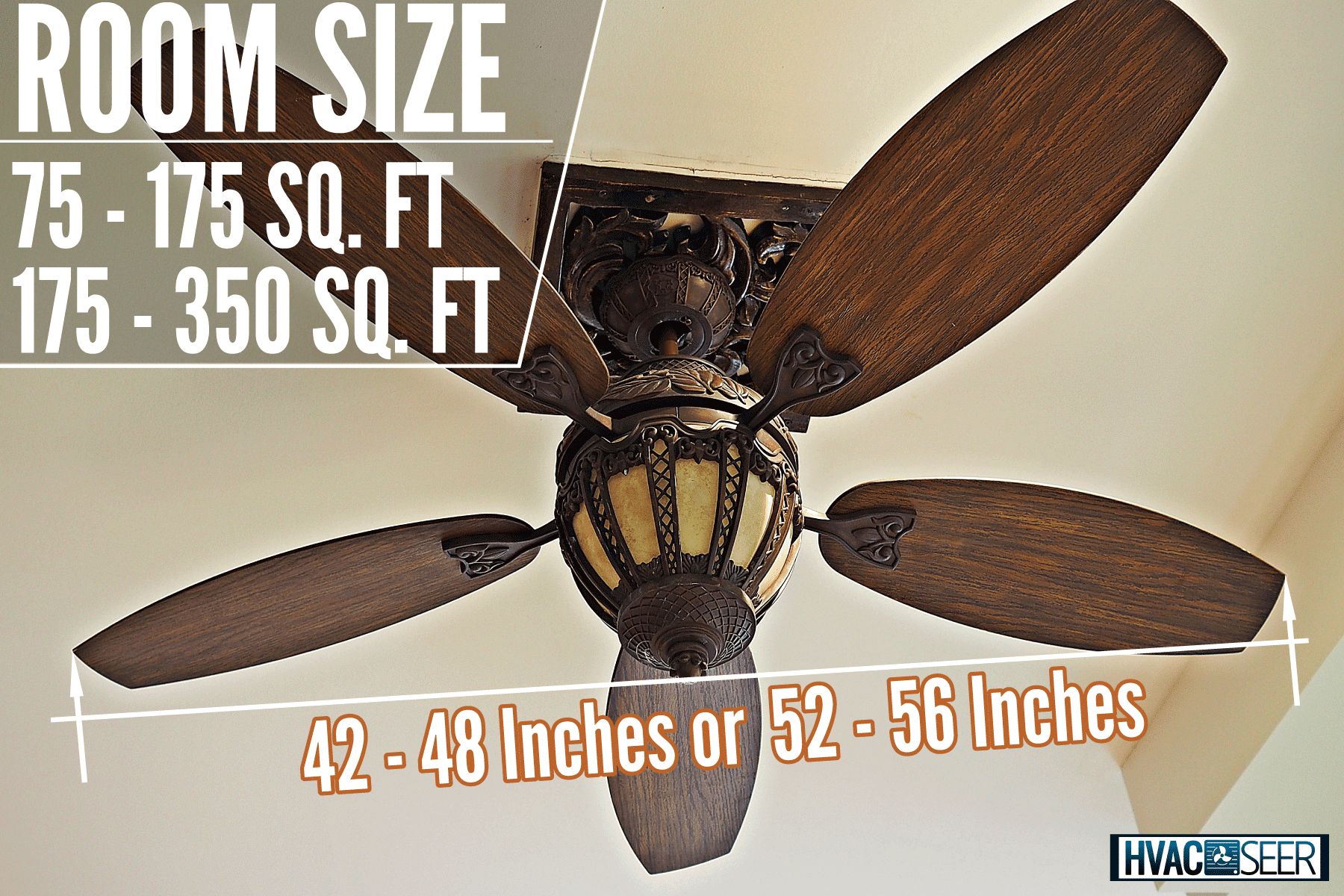Determining the Right Ceiling Fan Size: Ceiling Fan Size For Master Bedroom
The size of your ceiling fan is crucial for efficient air circulation and optimal comfort in your master bedroom. A fan that’s too small will struggle to move enough air, while a fan that’s too large might be overwhelming and noisy.
Recommended Fan Sizes Based on Room Square Footage
The recommended fan size for a room is typically determined by its square footage. Here’s a general guideline:
| Room Square Footage | Recommended Fan Size (Blade Span) |
|---|---|
| Up to 75 square feet | 36 inches |
| 75-144 square feet | 42 inches |
| 144-225 square feet | 52 inches |
| 225 square feet or more | 56 inches or larger |
Measuring Your Master Bedroom for the Right Fan Size
Accurately measuring your master bedroom is essential to determine the appropriate fan size. Follow these steps:
- Measure the length and width of your room in feet. For instance, if your room is 12 feet long and 10 feet wide, your room is 120 square feet (12 x 10 = 120).
- Multiply the length and width to determine the room’s square footage.
- Refer to the table above to determine the recommended fan size based on your room’s square footage.
Considering Ceiling Height, Ceiling fan size for master bedroom
The height of your ceiling also plays a role in selecting the right fan size.
Higher ceilings require larger fans to effectively circulate air.
For instance, if you have a standard 8-foot ceiling, a 42-inch fan might be sufficient. However, if your ceiling is 10 feet or higher, you may need a larger fan, such as a 52-inch fan.
Choosing the Right Ceiling Fan Style

The style of your ceiling fan is just as important as its size. It should complement the overall design of your master bedroom and create a cohesive look. There are numerous styles available, each with its own unique aesthetic and functional characteristics.
Ceiling Fan Styles and Their Characteristics
The choice of ceiling fan style depends on your personal preferences and the overall design of your master bedroom.
- Traditional: These fans often feature ornate details, such as wood blades, intricate carvings, and polished metal finishes. They are well-suited for bedrooms with classic or traditional decor, such as Victorian or Colonial styles.
- Modern: Modern ceiling fans are known for their sleek lines, minimalist designs, and use of contemporary materials like brushed nickel or chrome. They are ideal for bedrooms with a modern or contemporary aesthetic.
- Contemporary: Contemporary ceiling fans offer a blend of modern and traditional elements. They often feature clean lines, but with a touch of elegance and sophistication. These fans are versatile and can work well in various bedroom styles.
- Farmhouse: Farmhouse ceiling fans typically feature rustic elements, such as distressed wood, exposed beams, and natural finishes. They are a popular choice for bedrooms with a farmhouse or rustic decor.
Comparison of Ceiling Fan Styles
Here is a table comparing the pros and cons of each style:
| Style | Pros | Cons |
|---|---|---|
| Traditional | Elegant and timeless, adds a touch of sophistication | Can be bulky and take up more space, may not be suitable for smaller bedrooms |
| Modern | Sleek and minimalist, complements contemporary decor | May not be as versatile as other styles, can be more expensive |
| Contemporary | Versatile and stylish, blends modern and traditional elements | May not be as distinct as other styles, can be expensive |
| Farmhouse | Rustic and charming, complements farmhouse or rustic decor | May not be suitable for all bedroom styles, can be bulky |
Best Ceiling Fan Styles for Master Bedrooms
The best ceiling fan style for your master bedroom depends on the overall design theme.
- For a traditional master bedroom, a traditional ceiling fan with ornate details would be a good choice.
- For a modern master bedroom, a sleek and minimalist modern ceiling fan would complement the decor.
- For a contemporary master bedroom, a contemporary ceiling fan that blends modern and traditional elements would be a versatile option.
- For a farmhouse master bedroom, a rustic farmhouse ceiling fan would add to the charm of the room.
Additional Features to Consider

Beyond the basic functionality of a ceiling fan, several optional features can enhance its performance, aesthetics, and convenience. These features offer a range of benefits, but it’s crucial to weigh their costs and potential drawbacks before making a decision.
Light Fixtures
Ceiling fans often come equipped with integrated light fixtures, providing a multi-functional solution for both air circulation and illumination.
- Advantages: Integrated light fixtures eliminate the need for separate overhead lighting, simplifying installation and reducing clutter. They also offer versatility, allowing you to adjust the lighting level according to your needs.
- Disadvantages: The light output from integrated fixtures might be insufficient for larger rooms or specific tasks. The limited bulb choices and potential for flickering can also be drawbacks.
Remote Control
Remote control units provide a convenient way to operate your ceiling fan from afar, eliminating the need to manually adjust its settings.
- Advantages: Remote controls offer ease of use, allowing you to change fan speed, light settings, and even program timers without leaving your seat. They are particularly beneficial for high ceilings or hard-to-reach locations.
- Disadvantages: Remote controls can be prone to malfunction or require battery replacements. They can also be expensive, adding to the overall cost of the fan.
Speed Settings
Ceiling fans typically offer multiple speed settings to adjust airflow according to your preferences and the room’s temperature.
- Advantages: Multiple speed settings provide flexibility, allowing you to customize airflow for different activities and weather conditions. Higher speeds are ideal for cooling a room quickly, while lower speeds provide a gentle breeze.
- Disadvantages: While multiple speeds offer flexibility, they can also complicate operation, requiring you to select the appropriate setting for your needs.
Energy Efficiency
Energy-efficient ceiling fans can significantly reduce your electricity consumption and save you money on your energy bills.
- Advantages: Energy-efficient fans use less electricity while maintaining the same cooling power, leading to lower energy bills and a reduced environmental impact.
- Disadvantages: Energy-efficient fans may be slightly more expensive upfront but will pay for themselves in the long run through energy savings.
Energy Star certification is a recognized indicator of energy efficiency. Look for this certification when selecting a ceiling fan to ensure you are choosing an energy-saving option.
